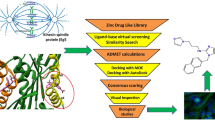Abstract.
Purpose: Discodermolide, a natural product from the marine sponge Discodermia dissoluta, has been previously described as an antimitotic agent with microtubule hyperstabilizing properties similar to those of paclitaxel (Taxol). The clinical success of paclitaxel has led to a growing interest in novel antimitotic compounds and the elucidation of their structure-activity characteristics. Analogs of discodermolide were prepared by acetylation of the hydroxyl groups at carbons 3, 7, 11 and/or 17 and tested for biological activity in human tumor cells to determine the structural requirements for tubulin interaction and cytotoxic effects. Methods: A549 human lung adenocarcinoma cells were incubated with discodermolide, or its acetylated analogs, and examined for their effects on microtubule architecture, cytotoxicity, and perturbations of the cell cycle. To confirm their direct interaction with tubulin, analogs were assayed for their ability to induce the polymerization of purified bovine brain tubulin. Results: Acetylation of discodermolide at the C-7 hydroxyl group potentiated the cytotoxicity of the molecule to A549 cells, whereas acetylation at the C-3 hydroxyl group had little effect on the cytotoxicity of the parent or C-7-acetylated compounds. The acetylation of the hydroxyl groups at the C-11 and C-17 positions severely abrogated the cytotoxicity of the molecule. Cell cycle analysis by flow cytometry revealed that the more cytotoxic analogs caused the accumulation of cells in the G2/M phase, a mechanism previously reported for discodermolide. All discodermolide analogs with IC50 values below 1000 nM exhibited microtubule effects to varying degrees in cultured A549 cells, yet only the most cytotoxic promoted the polymerization of purified tubulin. Conclusions: Although the parent compound was more effective at polymerizing purified tubulin, acetylation of the C-3 or C-3 and C-7 hydroxyl groups improved its cytotoxicity in whole cells suggesting that acetylation either enhances accumulation of the molecules within cells or imparts a secondary cytotoxic quality not present in the discodermolide molecule. The study reported here is the first to provide information on the structure-activity relationships of discodermolide using human tumor cells and analogs produced by semisynthetic modification of natural discodermolide.
Similar content being viewed by others
Author information
Authors and Affiliations
Additional information
Electronic Publication
Rights and permissions
About this article
Cite this article
Isbrucker, R.A., Gunasekera, S.P. & Longley, R.E. Structure-activity relationship studies of discodermolide and its semisynthetic acetylated analogs on microtubule function and cytotoxicity. Cancer Chemother Pharmacol 48, 29–36 (2001). https://doi.org/10.1007/s002800100287
Received:
Accepted:
Issue Date:
DOI: https://doi.org/10.1007/s002800100287




